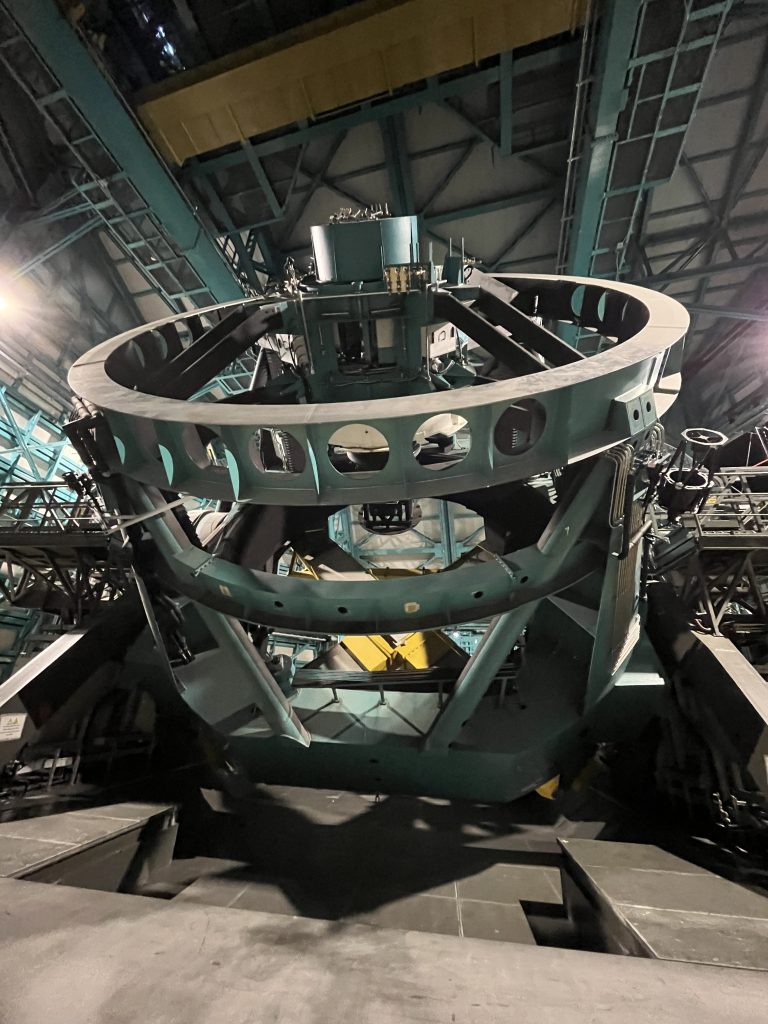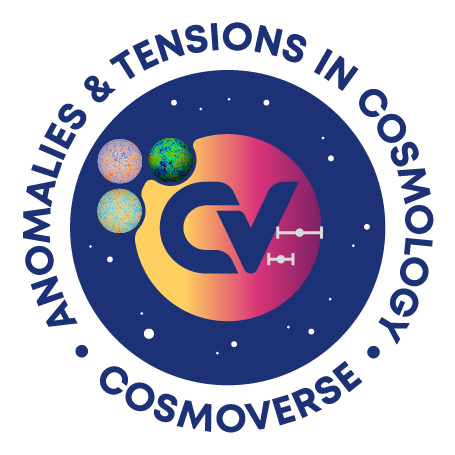Recently, at the end of a yoga class, the teacher talked about balance between unchanging and transient states. It could not relate more to what is on my mind these days as I work on a new observatory in Chile, that will observe the transient as well as the static sky. I am indeed one of the hundreds of scientists across the US and Chile who are building and preparing to operate the Vera C. Rubin Observatory, at the top of Cerro Pachón in the Chilean Andes.

Thanks to its compact 8-m telescope and its giant camera (imagine a DSLR camera the size of a car), it will image the sky very quickly. We expect it will make a map of the entire Southern sky every 3 nights, and it will do so for a decade! On the one hand, it will observe tens of billions of galaxies. Although galaxies move throughout the Universe, they appear like fixed points at our human time scale. However, the way they gather and are distributed across the Universe tells us a lot about the evolution and properties of the Universe. On the other hand, the Universe is actually not that quiet… The Rubin Observatory will also detect millions of changing phenomena every night like asteroids moving around in our Solar System, sudden giant explosions of dying stars or powerful bursts of light from the center of some galaxies. Why do we need to observe the quiet seemingly fixed sky as well as the transient sky?
One of the foundations of cosmology was the discovery a century ago that the Universe is expanding: galaxies are getting further away from each other. That means the Universe is not static, not eternal, it has a story, it evolves. Since this discovery, cosmologists have developed a seemingly simple framework to describe our Universe. On paper it all makes sense: a Universe expanding since the Big Bang with matter evolving from a soup to a structured web where galaxies form… until in 1998 several teams observed that the Universe is expanding faster and faster with time, which would not happen in a Universe mostly made of matter. And time and time again, and for 25 years now, cosmological observations all point towards a Universe made mostly of a dark energy, that would counter-balance matter and indeed cause the Universe’s expansion to accelerate. This dark energy is a simple quantity – the cosmological constant – in our equations, but we are having trouble relating it to any concrete physical meaning. An alternative I have been interested in is for General Relativity, the theory of gravity we inherit from Einstein, to be incomplete on cosmic scales. In this case, an alternative theory of gravity might be needed and could naturally explain an accelerated expansion. In any case, we need to settle this question by measuring the properties of gravity and dark energy more precisely.

Core structure of the Rubin Observatory
The Rubin Observatory will do so in several ways. The sky is sparkling with supernovae, very bright explosions of stars. It seems quite chaotic, but supernovae explode in a similar way across the Universe, this means we can infer based on their brightness how far away they are and therefore how fast the Universe has been expanding. This is how the accelerated expansion of the Universe was first discovered in 1998. In the coming decade, the Rubin Observatory will detect 10,000 more supernovae than we have ever seen! That will be a gigantic step in understanding dark energy. In parallel, dark energy also affects the way matter gets structured with time. It might sound simple enough to map matter in the Universe but another conundrum in cosmology is that most of the matter is in fact not visible… so it seems like a twisted road to study dark energy that way. However, although we don’t know *what* this dark matter really is, we know *where* it is. Indeed, galaxies form where there are clumps of dark matter and most importantly, their image will get distorted because the light will be bent by matter along the path of light. This effect is called weak lensing and is very powerful to measure how structures of matter between us and far away galaxies are growing with time. I have been working for the past decade on using weak lensing data from the Dark Energy Survey, a precursor experiment to the Rubin Observatory, to precisely measure dark energy and gravity’s laws on cosmic scales. Our measurements did not indicate any needs for an alternative to a cosmological constant or general relativity, but we set up the scene for the coming generation of galaxy surveys. The Rubin Observatory will observe a hundred times more galaxies than we have today, promising a significant improvement in our tests of dark energy and gravity. Such exciting prospects require however a huge amount of effort to prepare for the analysis of the coming data, to fill in the gaps in our understanding of cosmological observations. This is no small task and as such, thousands of scientists all around the world are gathering in collaborations, like the Dark Energy Science Collaboration which I joined a few years ago, to prepare for the analysis of Rubin Observatory’s data.
As a scientist I think it is a blessing to be working in a field where we stand on a century of developments and still get to tackle fundamental questions such as what is dark energy? Was Einstein wrong? As we are putting in place experiments to solve these questions, the future holds promise of big, and probably unexpected, discoveries.
Check out this website for more information on the Rubin Osbervatory: https://rubinobservatory.org/
